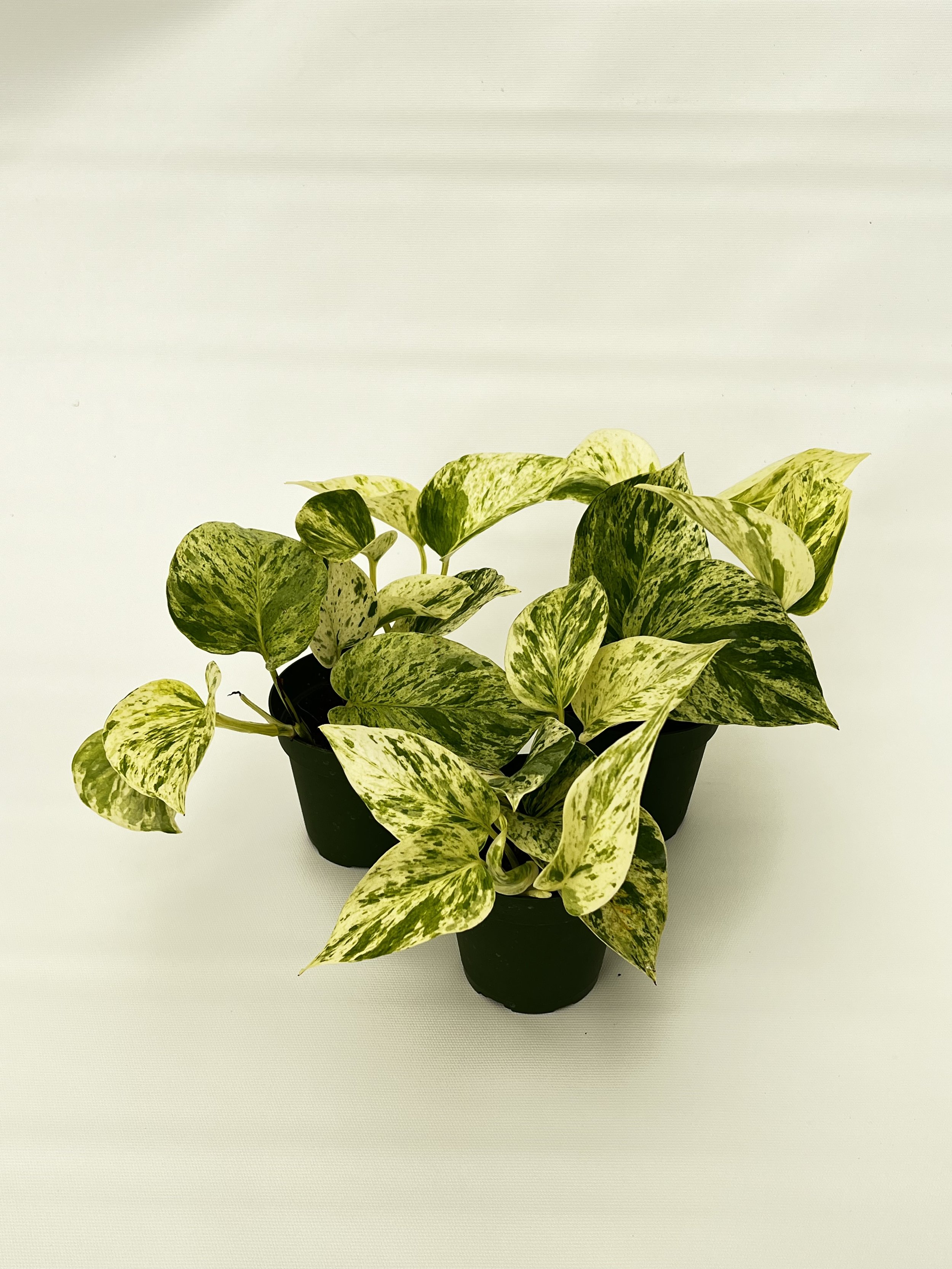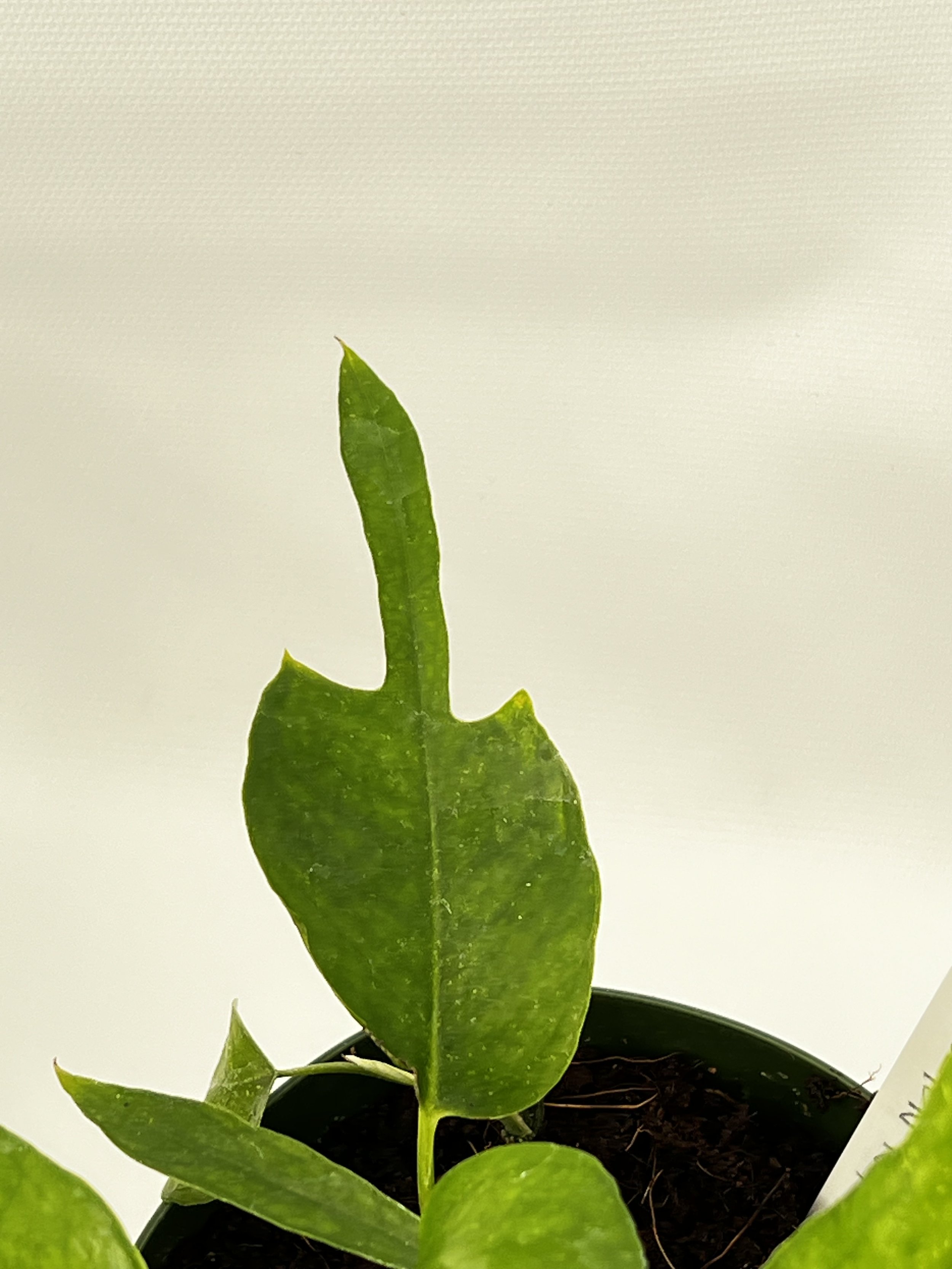House Plants and Indoor Tropical Decorative Plants
Anthuriums
Anthurium plants, commonly known as flamingo flowers or laceleaf, are tropical houseplants prized for their glossy, heart-shaped leaves and distinctive, brightly colored spathes (modified leaves) that resemble flowers. These spathes come in shades of red, pink, white, or orange and can last for several weeks. Anthuriums are popular for their long-lasting blooms and their ability to thrive indoors with bright, indirect light and consistent moisture. They are native to tropical regions of the Americas and are often grown as ornamental plants for their beauty and low maintenance requirements.
We offer the Anthuriums as either fresh cut flowers or potted plants. Flower colors available include: pink, green, white, red and purple.
Hoyas
Hoyas, commonly known as wax plants or wax flowers, are a genus of tropical succulent vines cherished for their waxy, often fragrant flowers and resilient nature. They typically feature thick, leathery leaves and produce clusters of star-shaped flowers that can range in color from white and pink to red and purple. Hoyas are renowned for their trailing growth habit, making them popular choices for hanging baskets or as climbers on trellises. They thrive in bright, indirect light and require well-draining soil. Known for their ability to tolerate neglect and occasional dry spells, Hoyas are favored by both novice and experienced gardeners alike for their unique appearance and ease of care.
Ti Plants
Ti plants, also known as Cordyline fruticosa or Hawaiian ti plant, are popular ornamental plants native to Southeast Asia, Australia, and the Pacific Islands. They are characterized by their vibrant, glossy leaves that can range in color from green to various shades of red, pink, purple, yellow, or variegated patterns. Ti plants can grow both indoors and outdoors in warm climates, reaching heights of up to several feet depending on the variety.
These plants are appreciated for their tropical appearance and are often used as decorative accents in gardens, landscapes, and indoor spaces. They thrive in well-draining soil and prefer bright, indirect light. Ti plants are relatively low-maintenance, requiring occasional watering and periodically pruning to maintain their shape and appearance. They are also known for their air-purifying qualities, making them a popular choice for indoor environments.
We currently offer the standard Ti plants, as well as red, and green leaf varieties. Sold in 1 gallon to 5 gallon container sizes.
Crotons
Crotons, scientifically known as Codiaeum variegatum, are popular tropical plants admired for their vibrant and multicolored foliage. They typically have broad, leathery leaves that feature bold patterns of red, orange, yellow, green, and even purple. Crotons are commonly grown both indoors and outdoors in warmer climates, where they can reach heights of up to 6 feet or more.
Care Tips for Crotons:
Light: Crotons thrive in bright, indirect light. They can tolerate some direct sunlight, especially in the morning or late afternoon, but avoid intense midday sun as it can scorch their leaves.
Watering: Keep the soil consistently moist during the growing season (spring and summer). Water when the top inch of soil feels dry. Reduce watering in the winter months but do not let the soil completely dry out.
Humidity: Crotons prefer humid environments. Increase humidity levels by misting the leaves regularly or placing the pot on a humidity tray filled with water and pebbles.
Temperature: Crotons prefer temperatures above 60°F (15°C). They are sensitive to cold drafts and temperatures below 50°F (10°C), which can cause leaf drop and damage.
Peperomias
Peperomias are a popular and diverse group of houseplants known for their ornamental foliage and relatively easy care requirements. Here’s a brief description and care guide for peperomias:
**Description:**
Peperomias come in various shapes, sizes, and colors, with different leaf textures ranging from glossy to matte and even textured. They are often compact and bushy, making them ideal for indoor spaces.
**Care Tips:**
1. **Light:** Peperomias prefer bright, indirect light. They can tolerate lower light conditions but may grow slower and have less vibrant foliage.
2. **Watering:** Allow the top inch or two of soil to dry out between waterings. They are susceptible to root rot, so it’s better to underwater than overwater. Reduce watering in winter when growth slows.
3. **Humidity:** They appreciate moderate to high humidity. You can increase humidity by misting the leaves or placing the plant on a humidity tray.
4. **Temperature:** Peperomias prefer average to warm temperatures, ideally between 65-80°F (18-27°C). Avoid cold drafts and sudden temperature drops.
5. **Soil:** Use a well-draining potting mix formulated for houseplants. A mix with peat moss and perlite works well.
6. **Fertilizing:** Feed monthly during the growing season (spring and summer) with a balanced, water-soluble fertilizer diluted to half-strength.
7. **Pruning:** Trim leggy stems to encourage bushier growth. Remove any yellow or damaged leaves promptly.
8. **Propagation:** Peperomias can be propagated from leaf cuttings or stem cuttings. Leaf cuttings should be taken with a part of the stem attached for best results.
9. **Pests:** Monitor for common houseplant pests like spider mites or aphids. Treat promptly if detected with insecticidal soap or neem oil.
By following these care guidelines, you can enjoy healthy and thriving peperomias indoors. They are great for adding greenery and texture to your home or office space without requiring intensive care.
Pothos
We offer Green Pothos, Golden Pothos, Snow Queen, N’Joy, Cebu Blue, and Skeleton Key. Available in potted 4” pots and hanging baskets.
Pothos (Epipremnum aureum), also known as devil's ivy, is a popular and easy-to-grow houseplant admired for its trailing vines and attractive, heart-shaped leaves. The leaves can vary in color from solid green to variegated with yellow or white. Pothos is a versatile plant that can thrive in various indoor conditions, making it ideal for beginners and experienced plant enthusiasts alike.
Care:
Light:
Pothos plants do well in medium to bright indirect light. They can also tolerate low light conditions but may grow more slowly and with less variegation.
Watering:
Allow the top inch or two of soil to dry out between waterings. Water thoroughly when watering, and ensure excess water drains away to prevent root rot.
Soil:
Use well-draining potting soil. Using Coco COIR or a mixture of peat moss, perlite, and/or vermiculite works well. Pothos can also grow in water, making it a versatile option for hydroponic setups.
Temperature and Humidity:
Pothos plants prefer temperatures between 60-85°F (15-29°C). They can tolerate slightly cooler temperatures but are sensitive to frost and cold drafts.
Normal household humidity is generally sufficient, but occasional misting or placing the plant on a humidity tray can benefit them, especially in drier indoor environments.
Fertilization:
Feed pothos plants every 2-3 weeks during the growing season (spring and summer) with a balanced houseplant fertilizer. Reduce feeding or stop altogether during fall and winter when growth slows down.
Pruning and Maintenance:
Trim back leggy growth or prune to control the size and shape of the plant. Regular pruning encourages bushier growth and helps maintain its aesthetic appeal.
Propagation:
Pothos plants are easy to propagate through stem cuttings. Simply cut a healthy stem with at least one leaf node and root it in soil.
Pest Control:
Pothos are generally resistant to pests, but occasional spider mites or mealybugs may appear. Treat any infestations promptly with insecticidal soap or neem oil.
Pothos is a resilient and forgiving plant that can thrive in various indoor conditions. With minimal care, it rewards you with lush greenery and a trailing habit that adds a touch of green to any space.






















































